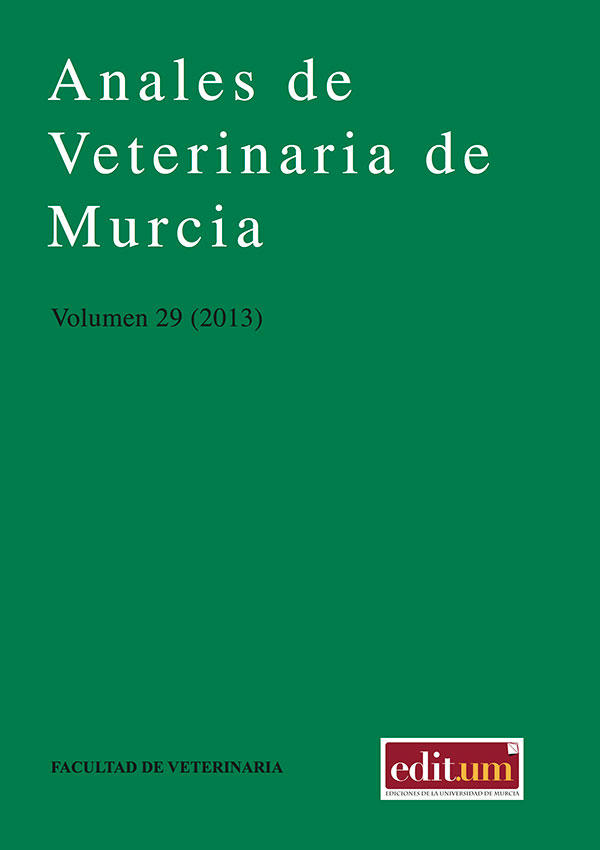Etiological and epidemiological particularities of ovine contagious agalactia: similarities and differences with goats
Abstract
Contagious agalactia (CA) is an infectious syndrome caused by several species of Mycoplasma spp. which affects small ruminants. The aim of this review is to describe the main differences noted between the disease in sheep and goats, especially with regard to its etiologic and epidemiological peculiarities. Thus, the presence of asymptomatic auricular carriers of CA-causing mycoplasmas and the stud’s role in the transmission of the disease are well known in goats, but scarcely evaluated in sheep. Further studies are needed to determine if these differences are real or if they are due to the shortage of scientific work in this matter.Downloads
-
Abstract532
-
PDF (Español (España))1074
Creative Commons Attribution 4.0
The works published in this journal are subject to the following terms:
1. The Publications Service of the University of Murcia (the publisher) retains the property rights (copyright) of published works, and encourages and enables the reuse of the same under the license specified in paragraph 2.
© Servicio de Publicaciones, Universidad de Murcia, 2019
2. The works are published in the online edition of the journal under a Creative Commons Attribution-NonCommercial 4.0 (legal text). You can copy, use, distribute, transmit and publicly display, provided that: i) you cite the author and the original source of publication (journal, editorial and URL of the work), ii) are not used for commercial purposes, iii ) mentions the existence and specifications of this license.

This work is licensed under a Creative Commons Attribution-NonCommercial-NoDerivatives 4.0 International License.
3. Conditions of self-archiving. Is allowed and encouraged the authors to disseminate electronically pre-print versions (version before being evaluated and sent to the journal) and / or post-print (version reviewed and accepted for publication) of their works before publication, as it encourages its earliest circulation and diffusion and thus a possible increase in its citation and scope between the academic community. RoMEO Color: Green.




